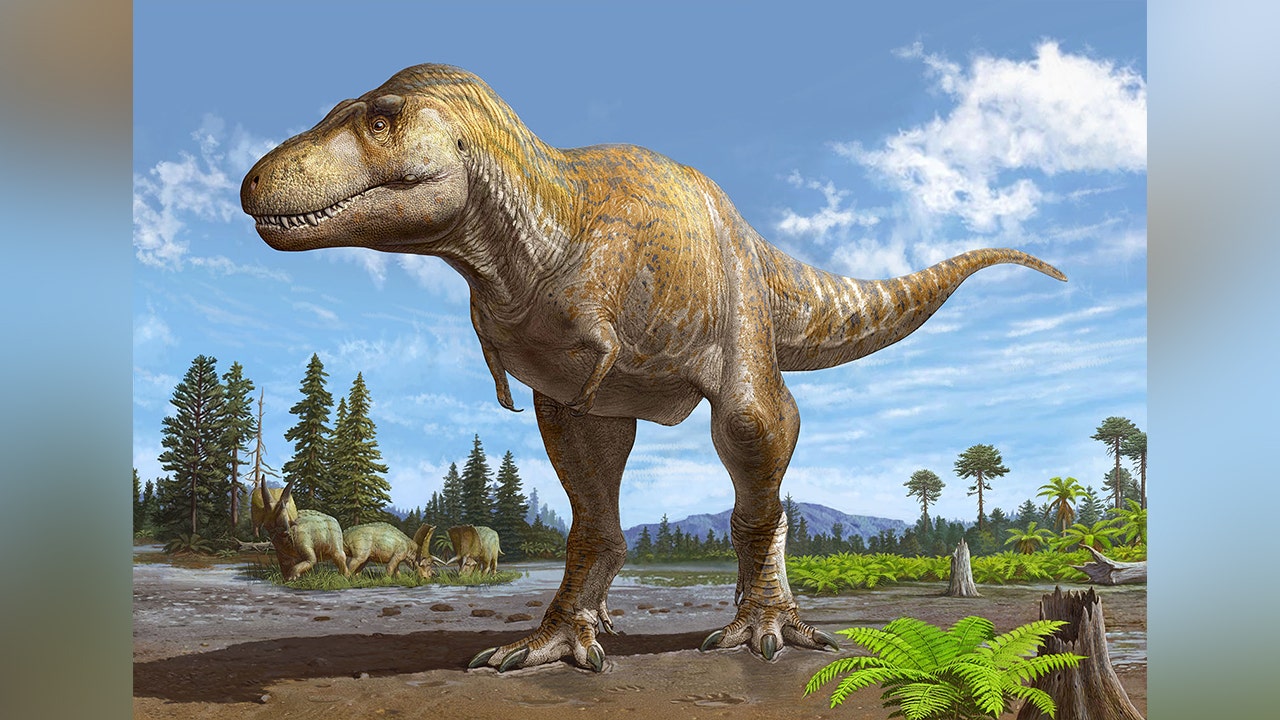The world of paleontology has been shaken by a groundbreaking discovery that has completely reshaped our understanding of the prehistoric past. A team of researchers, led by the New Mexico Museum of Natural History and Science (NMMNHS), unveiled a remarkable find – a new dinosaur subspecies believed to be a more primitive and older relative of the infamous Tyrannosaurus rex. This discovery has the potential to redefine the evolutionary timeline of these majestic creatures.
Tyrannosaurus mcraeensis: An Ancient Predator
In a study published in the prestigious journal “Scientific Reports,” the team introduced the world to “Tyrannosaurus mcraeensis,” a formidable predator that has been revealed to be both older and more primitive than the iconic T. rex. Despite its ancient roots, this newly discovered subspecies stands on par with the T. rex in terms of size and power, painting a vivid picture of the diverse and dynamic ecosystem that existed millions of years ago.
Unearthing the Past: A Momentous Discovery
The pivotal discovery of a partial skull in the vast expanse of western New Mexico served as the catalyst for this groundbreaking study. This remarkable finding challenges the existing beliefs held by paleontologists, pushing back the presence of Tyrannosaurus in North America by millions of years. The implications of this find are monumental, offering a profound glimpse into the rich and complex history of life on our planet.
An International Collaboration: Uniting Forces for Knowledge
The significance of this discovery cannot be understated, as it represents the collective efforts of researchers from esteemed institutions such as the University of Bath (UK), University of Utah, George Washington University, Harrisburg University, Penn State Lehigh Valley, and the University of Alberta. This collaborative endeavor underscores the global impact and relevance of this prehistoric breakthrough.
Revelations and Mysteries: Unraveling the Tyrannosaurus Legacy
The T. rex, widely regarded as one of the most formidable and awe-inspiring predators to have ever roamed the Earth, has long captivated the imagination of researchers and enthusiasts alike. The sudden appearance of this species in North America approximately 66 million years ago had previously overshadowed the existence of any close relatives. This newfound revelation prompts a reevaluation of the evolutionary journey that led to the emergence of the T. rex on the North American continent, unraveling the mysteries that shroud its arrival and adaptation.
Exploring Evolution: Redefining the Tyrannosaurus Family Tree
Co-author Sebastian Daman’s meticulous reexamination of species collected from southern New Mexico in 2013 proved to be the catalyst for this momentous discovery. The unveiling of T. mcraeensis, a predator akin in size and carnivorous nature to the T. rex, has sparked a renewed exploration of the evolutionary lineage of these majestic creatures. The subtle differences observed in the jaw bones have not only dispelled the notion of T. rex as a direct ancestor but have also kindled the hope of unearthing more revelations about the tyrannosaur lineage.
Conclusions and Implications: A Glimpse into the Ancient Past
The ramifications of this discovery extend far beyond the realm of paleontology, offering a profound insight into the ancient ecosystems that once thrived in the southern United States over 72 million years ago. The notion that tyrannosaurs may have originated in this region before dispersing across western North America signifies a significant turning point in our understanding of prehistoric life. Dr. Spencer Lucas, the paleontology curator at NMMNHS, aptly captures the essence of this groundbreaking find, emphasizing the boundless scientific significance and untapped potential harbored within the rocks and museum drawers of New Mexico.
In conclusion, the unearthing of Tyrannosaurus mcraeensis represents not just a scientific breakthrough but a testament to the relentless pursuit of knowledge and understanding. As we continue to delve deeper into the annals of history, this discovery stands as a testament to the endless wonders and mysteries that await discovery in the awe-inspiring world of paleontology.


